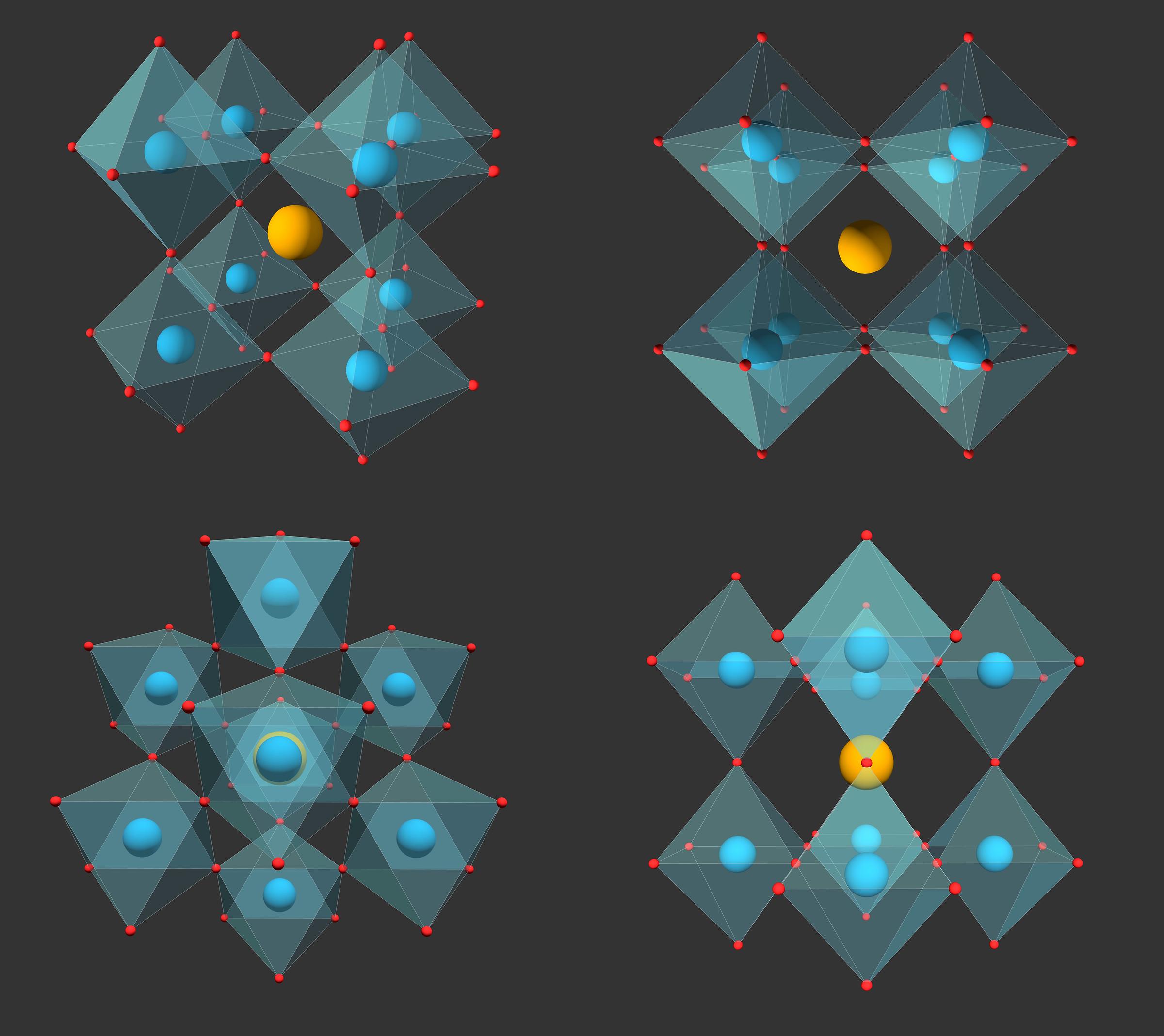- About Ajou
- Admission
- Academics
- Research
-
International
International
- Campus Life
-
News and Event
News and Event
-
AUT
AUT
Major Research Result
NEW A Novel Computational Workflow for Exploring New Inorganic Halide Perovskites
- 2023-12-13
- 2319
Researchers develop a new machine learning algorithm to aid the discovery of new inorganic halide perovskites and their derivatives.
A new machine learning-based material discovery algorithm developed by researchers from South Korea explores optical and electrically active inorganic halide perovskite systems and their derivatives, enabling the identification of 153 previously unknown materials. The team has also designed a new metal halide, namely Cs3LuCl6, for white light emission applications.

A new machine learning-based algorithm combines basic theoretical concepts with AI technology to detect over 150 new stable compositions of inorganic halide perovskites, including Cs3LuCl6, for white light emission.
Picture courtesy: Niethammer Zoltan from Shutterstock.
Halide perovskites are photosensitive materials which have taken the world of lasers, light-emitting diodes (LEDs), and solar cells by storm, owing to their excellent optoelectronic properties. Despite their popularity, most organic-inorganic hybrid perovskites suffer from a lack of stability when exposed to environmental factors, such as heat and oxygen.
Studies have shown that all-inorganic halide perovskites could be a more resistant-to-degradation alternative to the conventional options. However, the physical and chemical properties of all-inorganic perovskites remain a mystery due to their complex structural features.
To overcome this hurdle, a team of researchers led by Assistant Professor Sung Beom Cho from Ajou University in Korea recently combined machine learning with density functional theory (DFT) calculations to computationally screen new inorganic metal halides (especially ones with perovskite structure) and their derivatives. In their study published in ACS Energy Letters on 2 August 2023, they presented a simple AI-powered strategy for investigating structures and properties of metal halides and the synthesis technique for a new perovskite material for white LED applications.
“We took case studies of known metal halide systems and merged them with fundamental undergraduate-level theories and the latest in AI technology to transform theoretical concepts into tangible materials,” says Dr. Cho, highlighting the simple yet ingenuine design of the new computational exploration technique.
The new workflow enabled exploration of 108 metal halide systems and predicted over 1,700 possible material structures, ranging from 0D to 3D. The team also analyzed the electrical properties and thermal stabilities of possible perovskite structures and mapped the chemical spaces by listing stable compositions on a periodic table. This led to the identification of 153 previously unknown materials.
The researchers demonstrated the robustness of their computational analysis by synthesizing Cs3LuCl6, one of the metal halides predicted by the machine learning model. They also tested its optoelectrical properties by using it in white LEDs.
Apart from its immediate applications as a tool for discovering newer metal halides with advanced photophysical properties, this work also presents a highly versatile methodology that can revolutionize material discovery and reshape industries dependent on high-performance materials in the long run. “It's a framework that can be extended to virtually any material system, opening a gateway to accelerated discovery in fields crucial to cutting-edge industries like electronics and energy,” concludes Dr. Cho.
Reference
Authors: | Hyeon Woo Kim1,2, Joo Hyeong Han1, Hyunseok Ko2, Tuhin Samanta2, Dong Geon Lee1,2, Dong Won Jeon3,4, Woongchan Kim3,4, Yong-Chae Chung1, Won Bin Im1,*, and Sung Beom Cho3,4,* |
Title of original paper: | High-Throughput Screening on Halide Perovskite Derivatives and Rational Design of Cs3LuCl6 |
Journal: | ACS Energy Letters |
DOI: | |
Affiliations: | 1 Division of Materials Science and Engineering, Hanyang University 2 Center of Materials Digitalization, Korea Institute of Ceramic Engineering and Technology (KICET) 3 Department of Materials Science and Engineering, Ajou University 4 Department of Energy Systems Research, Ajou University |
*Corresponding authors’ emails: imwonbin@hanyang.ac.kr (Won Bin Im) and csb@ajou.ac.kr (Sung Beom Cho)
About Ajou University
Founded in 1973, Ajou University has quickly grown to become one of the top universities in the Republic of Korea. With over 15,000 students and 50 research centers in diverse fields, Ajou University partakes in the largest national research and graduate education project funded by the Korean Ministry of Education. In line with its recently reformed vision, Ajou University’s goal is to change society by connecting minds and carrying out high-impact research to improve the welfare of people in and outside Korea.
Website: https://www.ajou.ac.kr/en/index.do
About the author
Dr. Sung Beom Cho has been an Assistant Professor in the Department of Materials Science and Engineering at Ajou University since 2022. He got his Ph.D. in Materials Science and Engineering and dual B.S. degrees in Materials Science Engineering and Physics from Hanyang University. Before joining Ajou University, Dr. Cho was a Senior Researcher at the Korea Institute of Ceramic Engineering and Technology and a Postdoctoral Associate at Washington University in St. Louis. He specializes in multiscale and multiphysics modeling of materials, with a foundation in solid-state physics and thermodynamics. His expertise extends from fundamental research to industrial applications, from semiconductors to batteries.
